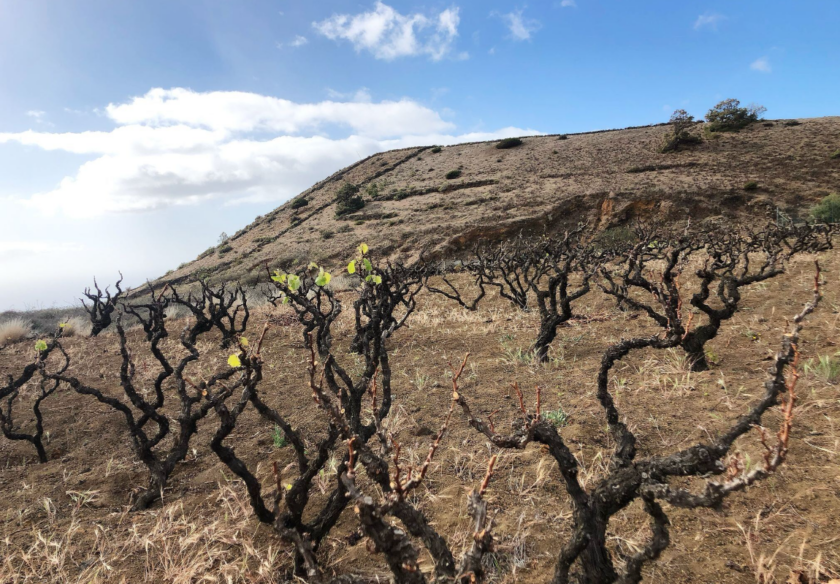Bimbache
Several of the Canary Islands—Tenerife, Gran Canaria, Lanzarote and La Palma come to mind—have been known for decades to European tourists, and are increasingly appreciated by adventurous American wine drinkers. Yet there are others still nearly unknown, and one of the most compelling untold vinous stories in the Canaries comes from the south westernmost, smallest, and least-populated of all of them: El Hierro.
Just 18 miles across at its widest point, El Hierro and its three municipalities encompass a mere 11,000 people. Its volcanic spine divides a lush, green, cloudy north from a subdesert outer coast, meaning that Mediterranean staples like pine trees and figs vie for cultivation with papaya, mango and banana. An afterthought for many here, but of intense potential interest to wine lovers, is the fact that El Hierro has also been described as a veritable ‘Jurassic Park’ of lost and nearly-lost grape varieties. The only catch, for curious outsiders? Every grape harvested on the island was processed by the single local co-op. Until now.
It was to here in El Hierro that Rayco Fernández, a co-founder of Lanzarote’s renowned Puro Rofe project, and his partner Silvia Viot, came in 2018 looking for a different but no less profound expression of the Canaries. Both originally from Gran Canaria—a Big Island, in the locals’ eyes— they faced an uphill battle to establish credibility and trust, but they’ve now succeeded in showing the island that its produce demands attention beyond its shores, and they’ve assembled five hectares of bushvines split among many microparcels around the three municipalities of Valverde, El Pinar, and La Frontera. Varieties are what Rayco and Silvia call a ‘popurrí’: Verijadiego, Listán Blanco, Bual, Verdello, Forastera, Marmajuelo in white; Listán Negro, Verijadiego Negro, Baboso, Tintilla, and Negramoll in red. (And more besides, some practically too obscure to name!) The mind boggles. All of these root in the prevailing iron-rich basaltic soil with more or less organic material depending on whether the zone was formerly forested, as much of the island used to be.
The winemaking philosophy here is similar to that of their Puro Rofe project in Lanzarote. Cultivation is organic (in conversion) and extremely careful attention must be paid to harvest times, both because some varieties ripen very differently from others, and the 800-meter vineyards in the mountains of Valverde ripen a full month and half after the sun-kissed coastal vines of El Pinar. Native yeast-fermentations and elevage proceed in a nondogmatic mixture of vessels both steel and wood. Whites in particular are pressed gently and without any maceration, as Rayco and Silvia prefer the wildness of the local varieties to frame a pure fruit core rather than take center stage. Sulfur is employed at bottling only.




